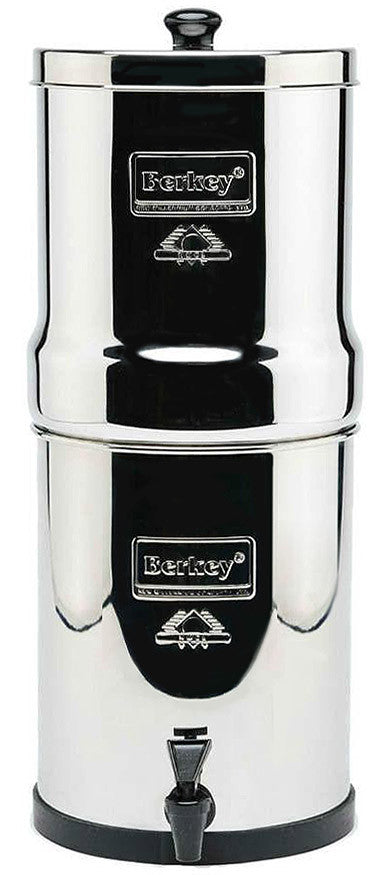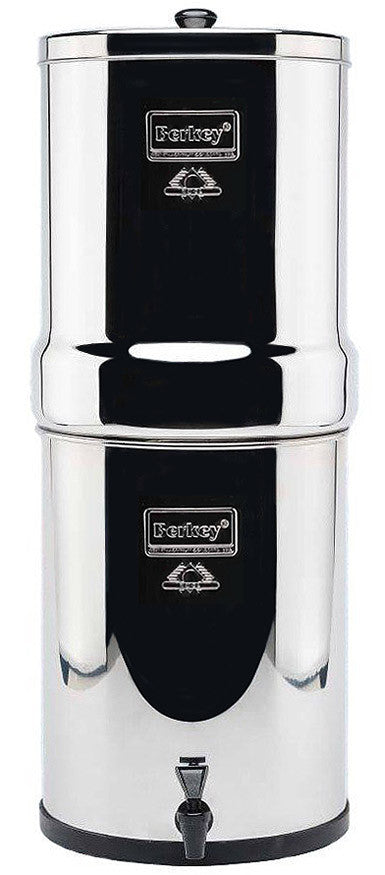
Radon is an element that is dissolved and can sometimes be found in water wells. You cannot smell, see, or taste radon. However, you can drink it, especially when your main water source is the water well.
One common problem in modern homes is radon in the water. This element can cause long-term health problems.
According to the United States Environmental Protection Agency (US-EPA), radon is one of the second leading causes of respiratory problems, such as lung cancer, in America today. It is caused by the soil and rocks at the foundation of buildings.
However, recent studies show that its presence in water can significantly affect one’s health.
Thus, this article aims to discuss radon and its sources, tackle the health risks of radon in water, and give examples of successfully removing or reducing radon from water sources.
Understanding what is Radon
Radon is a gas, and it is radioactive. It was first discovered by a German chemist, Friedrich Ernst Dorn, in 1990.
Radon is produced when radium decays. At room temperature, it is colorless, radioactive, and odorless. Since radon is a gas, it can be easily inhaled, and the body's tissues are easily exposed to radiation. Indeed, it has a short half-life.
However, it can decay into longer, solid, and radioactive elements, collecting dust particles and being inhaled.
Meanwhile, if it is in its solid state, it is yellow and becomes orange-red at a low temperature. Modern hospitals use small amounts of radon to aid in treating cancer.
Sources of Radon
Radon can be formed from radium decay found in rock, soil, and water.
If it is from the soil, it is coming from the crust of the Earth. It escapes through the crevices and cracks in the bedrock. It might also come from the foundation cracks or basements of your homes, which are poorly sealed.
Radon might also come from the radium dissolved in the groundwater, which can become the source of your water supply. If it is trapped in your home, it can become dangerous in the long run.
Radon found in water usually comes from water wells and is drilled in bedrock with radon gas. The wells can be either private water wells or wells with a public water supply system. However, radon does not usually occur in high concentrations in surface water.
The dissolved radon can escape into the air when you open your water, bathe, do your laundry, wash your dirty dishes, and clean your room.
According to studies, the estimated indoor air radon concentrations can increase by about one pCi per liter for every 10,000 pCi liters of water. For example, if the water well contains 2,000 pCi per liter of radon, you can expect to have 0.2 pCi per liter of radon to the indoor concentration.
EPA says that indoor air should not have more than four pCi of radon per liter to prevent the potential for cancer.
The different states in America, plus the EPA, recommend that standard drinking water contain only 300 to 10,000 pCi per liter of radon, but no standard currently exists.
A study conducted by Pennsylvania University found that 78% of participants had a water source that exceeded the 300 pCi/L threshold. Over 52% exceeded the 1,000 pCi/L standards, and 10% exceeded the 5,000 pCi/L guidelines.
Health Effects of Radon
You can inhale radon from the air and ingest it from the drinking water inside your home. Studies show that inhaling radon can increase one’s chance of having lung cancer greater than stomach cancer.
One can also likely increase his chance of getting lung cancer if he is exposed to radon, plus he is a chain smoker.
Detection and Testing

You can do several tests to determine if your home is at risk of radon exposure. One is through the inexpensive indoor air radon test, which can be bought at local home supply stores.
Meanwhile, radon sampling on water requires a special laboratory or sampling technique to measure radon before it escapes the sample water.
Radon Treatment
Remember that if there is radon in the water, it also means that it enters the house through the soil or basement. As such, it will be the predominant water source in your house. Thus, treating your water source with radon can also eliminate radon problems in the air.
You must remove the radon in water before it becomes airborne. Devices termed ‘point-of-entry treatment' are installed on the devices to treat water resources before entering your home.
Granular Activated Carbon (GAC)
One method of removing radon from water is using granular activated carbon (GAC) units. Various units are available in different models, sizes, and types; however, they all use the same technique.
These GAC units have a fiberglass tank with granular activated carbon. This fine material traps and holds the filtered radon. The carbon's fine particle size can quickly clog sediments or other contaminants in the water.
Meanwhile, GAC units include special backwashing that can remove sediment. However, this feature can reduce the effectiveness of the activated carbon in removing radon.
Thus, eliminating the sediment filter or sediment source on the GAC tank is one of the best protection measures against clogging.
Various estimates suggest that GAC should only be used on water supplies with a maximum radon concentration of less than 30,000 pCi/L.
After you are done with testing your water, you must check the GAC filters with high removal efficiency rates according to the level found in the water.
If you have finally decided to buy a unit, choose a filter size that matches your water condition and daily water use.
According to the EPA standards, a three-cubic-foot unit can handle about 250 gallons of water daily and reduce radon levels. The typical daily use of water inside the home can range from 50 to 100 gallons per person.
One of the major drawbacks of using the GAC filters in removing radon is that it can cause an eventual buildup of radioactivity within the GAC filter. Place the GAC unit in an isolated part of your house, like the basement, to prevent exposure.
You must also replace the carbon annually to reduce the dangers of accumulated radioactivity. Meanwhile, GAC filters used for radon removal must be disposed of immediately. Professionals can help you properly dispose of used GAC filters.
GAC treatment units are also installed inside the home to remove petroleum, chlorine, pesticides, odors, and various products in the water. In these examples, the GAC filter may accumulate radioactivity as it removes the radon in the water.
Given this, water should always be tested for radon. Radon is a health hazard that the GAC filters must remove.
Home Aeration Units
In some of their reports, the USA EPA has stated that aeration is one of the best technologies available today to remove radon from the water.
The home aeration units can agitate the water physically and allow the dissolved radon gas to be vented and collected outside.
The current innovation in home aeration units can remove about 99.9% of radon.
Other water quality issues, such as manganese, iron, and other contaminants, must also be considered when installing home aeration units.
If your water contains these contaminants, it may need to be pre-treated so it won’t clog the aeration unit. You can also use disinfection equipment, as some aeration units do not allow bacterial contamination in the water system.
Various aeration treatment units are available nowadays. However, they all function on the principle that aerating or agitating the water will enable the radon gas to escape to the vent and be captured.
Each unit has advantages and disadvantages. One common aeration style is a spray aeration unit. Radon water is sprayed into the tank through a nozzle in this style. The increased surface area of the sprayed water droplets causes the radon to escape as a gas, while the air blower carries the gas to a vent outside your home.
The initial spraying will remove only about 50% of the radon. Therefore, you must spray the water several times to increase the removal efficiency. To have a supply of treated water, you must use a large holding tank or a 100-gallon tank.
Another aeration unit to try is the packed column, wherein the water will pass through a thin film with inert packing material inside the column. With this, the air blower will force the radon-contaminated air at the back of the column to an outdoor vent.
If the column is high, it can remove about 95% of radon in the water. Then, the final stage of the aeration system uses a shallow tray that will contact the water and the air.
Water is sprayed into the tray and flows onto the ashtray, while air is sprayed through the tiny holes on the bottom. As such, it can remove more than 99.9% of radon from the water and vents outside your home.
Levels of Radon to Look Out

No federal law or regulation enforces the standard radon level in drinking water. The EPA has proposed a rule to regulate the radon level in drinking water from municipal water suppliers or systems catering to more than 25 households annually. The EPA does not regulate privately managed water wells.
The EPA has proposed that municipal or community water suppliers provide clean water with radon levels that are not more than 4,000 pCi/ L. As such, it only contributes up to 0.4 pCi/ L of radon inside your home.
With this requirement, it is assumed that the State also takes action to reduce radon levels indoors by developing EPA-approved air units. It also includes an enhanced indoor air program by the State called the Multimedia Mitigation Programs.
Most of the radon you breathe comes from the ground beneath your house. With this option, the State can focus its efforts on resolving bigger problems by encouraging the public to fix radon issues inside their homes and prevent them from entering.
With the proposed regulation, those States that did not wish to develop their indoor air programs are required to reduce radon levels in their community water systems by up to 300 pCi/L.
The water's radon content will contribute only about 0.03 pCi/ L to the air inside your home. Even if a State does not develop and approve an enhanced indoor air program, private homes may choose water systems with a local radon program and produce drinking water with 4,000 pCi/L.
The EPA proposed this under the 1996 Safe Drinking Water Act framework Amendments. This would reduce people's overall risks from radon in the air and water.
Conclusion
In sum, radon is present in our drinking water, and techniques and inventions are available to reduce its number.
You can also try the Berkey Water Filters products for your home.
The Berkey black elements have been tested and certified to remove radon 222 below detectable limits.
← Older Post Newer Post →





